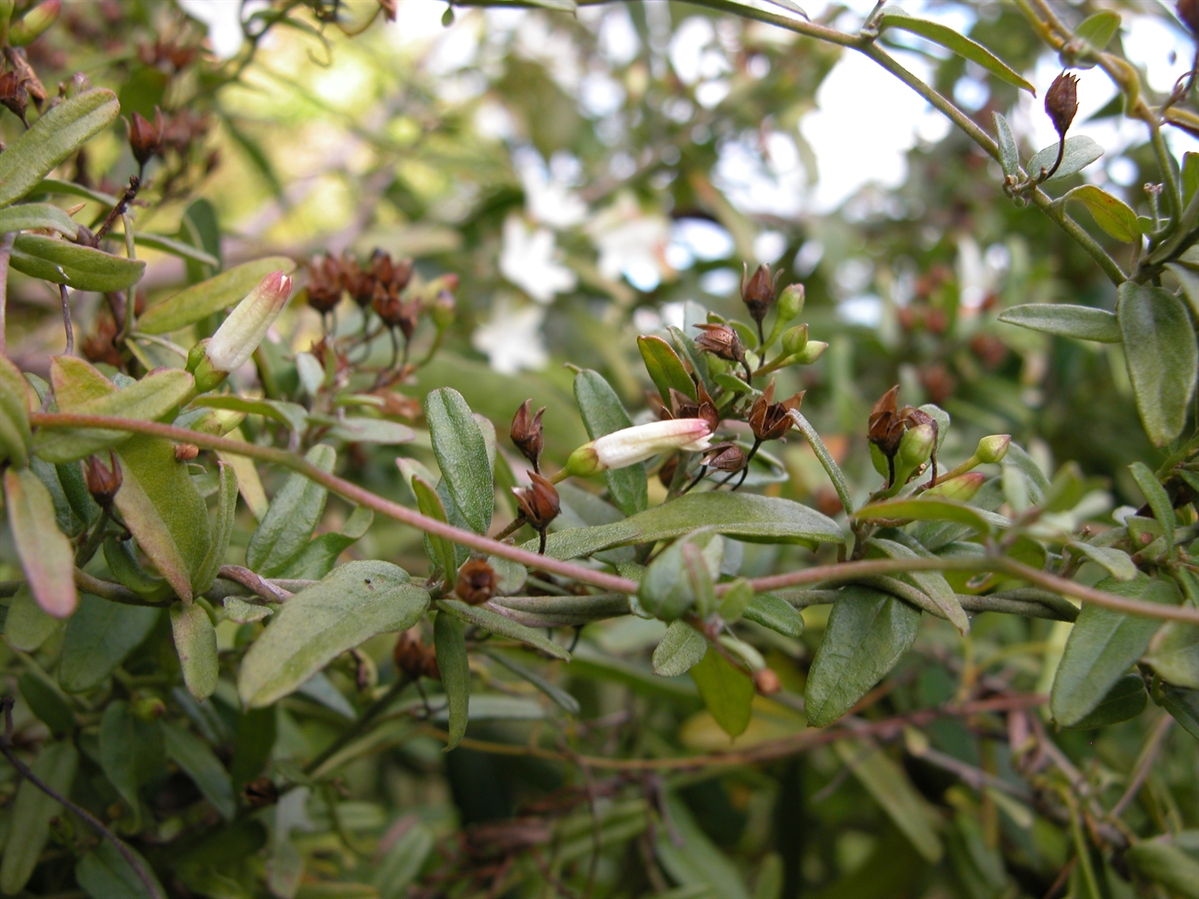Habit: Jacquemontia havanensis grows as a vine becoming woody with age. The leaves are arranged alternately, to 9 cm in length, and linear to ovate. The leaf margin is entire with an acute or retuse leaf apex. Vegetative material may be glabrous or have stellate hairs.
The complete, perfect, actinomorphic flowers are arranged in cymes, axillary clusters or are solitary. The calyx has 5 unfused, greenish sepals whose edges slightly overlap. The corolla has 5 fused, white (occasionally pale blue or pink) petals with elongate lobes. There are 5 stamens fused to the base of the corolla tube. The superior ovary has 2 locules and numerous seeds. The fruit is a brown capsule at maturity. The seeds are slightly winged.
Habitat: Jacquemontia havanensis grows in Dry Broadleaf Evergreen Formation – Forest/Woodland/Shrubland/Dwarf Shrubland (coppice/scrubland) as well as in Pine Woodlands and Beach Strand areas.
Distribution: Jacquemontia havanensis occurs on all island groupings in the Lucayan Archipelago as well as Florida, the entire Caribbean region and Mexico and Central America.
Medicinal/Cultural/Economic usage: Jacquemontia havanensis is not known to be used medicinally in the Lucayan Archipelago.


